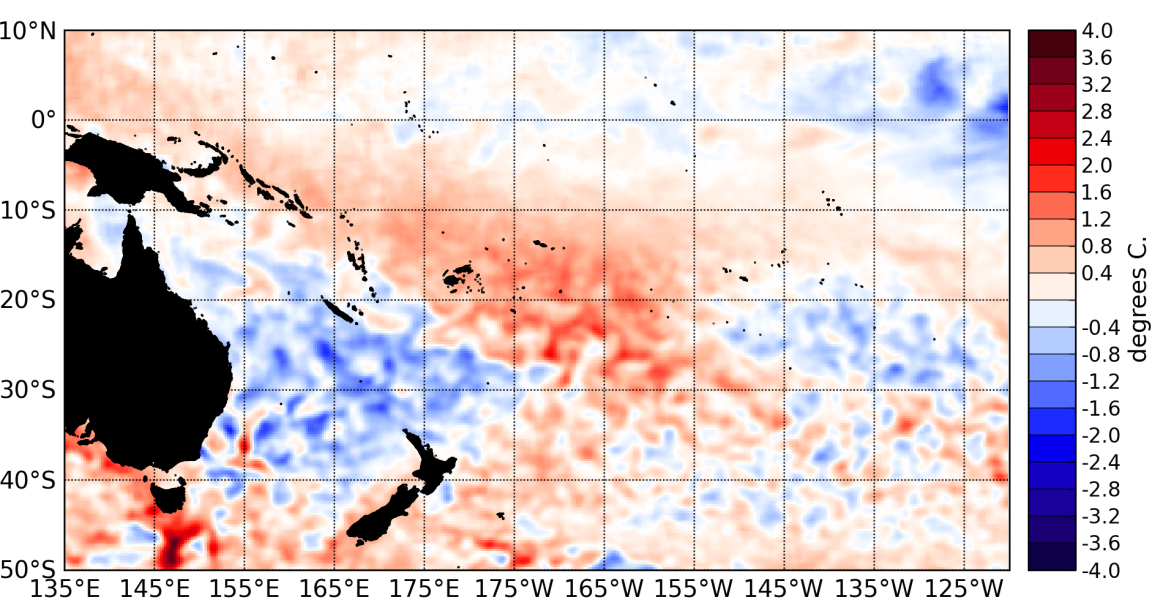The tropical Pacific remained in a neutral state (neither El Niño nor La Niña) in June 2013, despite a pattern reminiscent of weak La Niña conditions in the eastern Pacific.
June NINO values estimates are 0°C for NINO 3.4 , – 0.3°C for NINO 3 and 0.1°C for NINO 4, values very close those registered in May.
In the subtropics, the large region of warmer than normal Sea Surface Temperatures (SSTs) that extended from around Fiji to the Austral Islands has weakened, while cooler than normal SSTs have intensified further west.
The cool subsurface ocean temperature anomaly (at about 150 m. deep) that exists in the eastern equatorial Pacific is now capped by warmer than normal waters at about 50 m. deep, leaving only a very shallow cool surface expression: this probably will lead to the disappearance of the present weak La Niña – like signal in the coming few weeks.
The trade winds remained slighly stronger than normal in the western Pacific. The Intertropical Convergence Zone (ITCZ) was north of its climatological position in the eastern Pacific. The South Pacific Convergence Zone (SPCZ) was slightly intensified from Papua New Guinea to Northern Vanuatu.
The latest value for the TRMM ENSO index for the 30 days to 25 June is – 1.71 (on La Niña side of neutral) and the monthly SOI estimate for June is +0.8. A moderate amplitude Madden – Julian Oscillation (MJO) event propagated over the region in June and is forecast to propagate further over the coming two weeks, leading to suppressed convection over the western Pacific.
The ensemble of dynamical and statistical climate forecast models that NIWA monitors indicates that neutral ENSO conditions are likely to persist over the July – September 2013 period, with 66 % chance, versus 29 % for La Niña and 5 % chance El Niño (source IRI / CPC).

